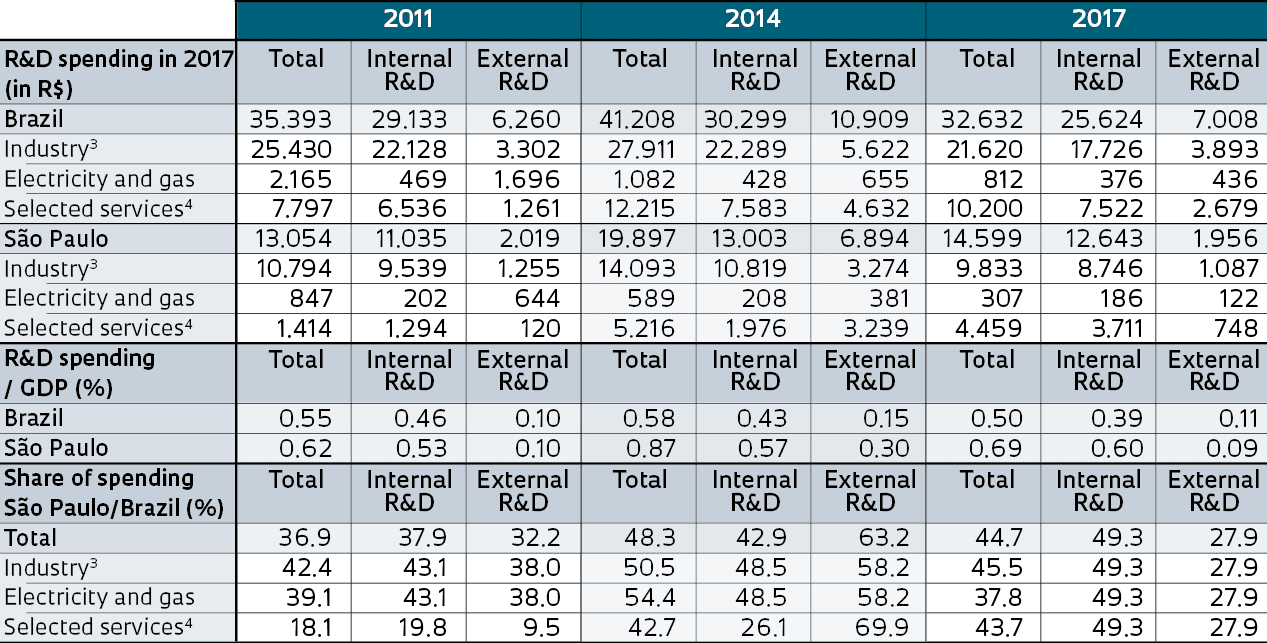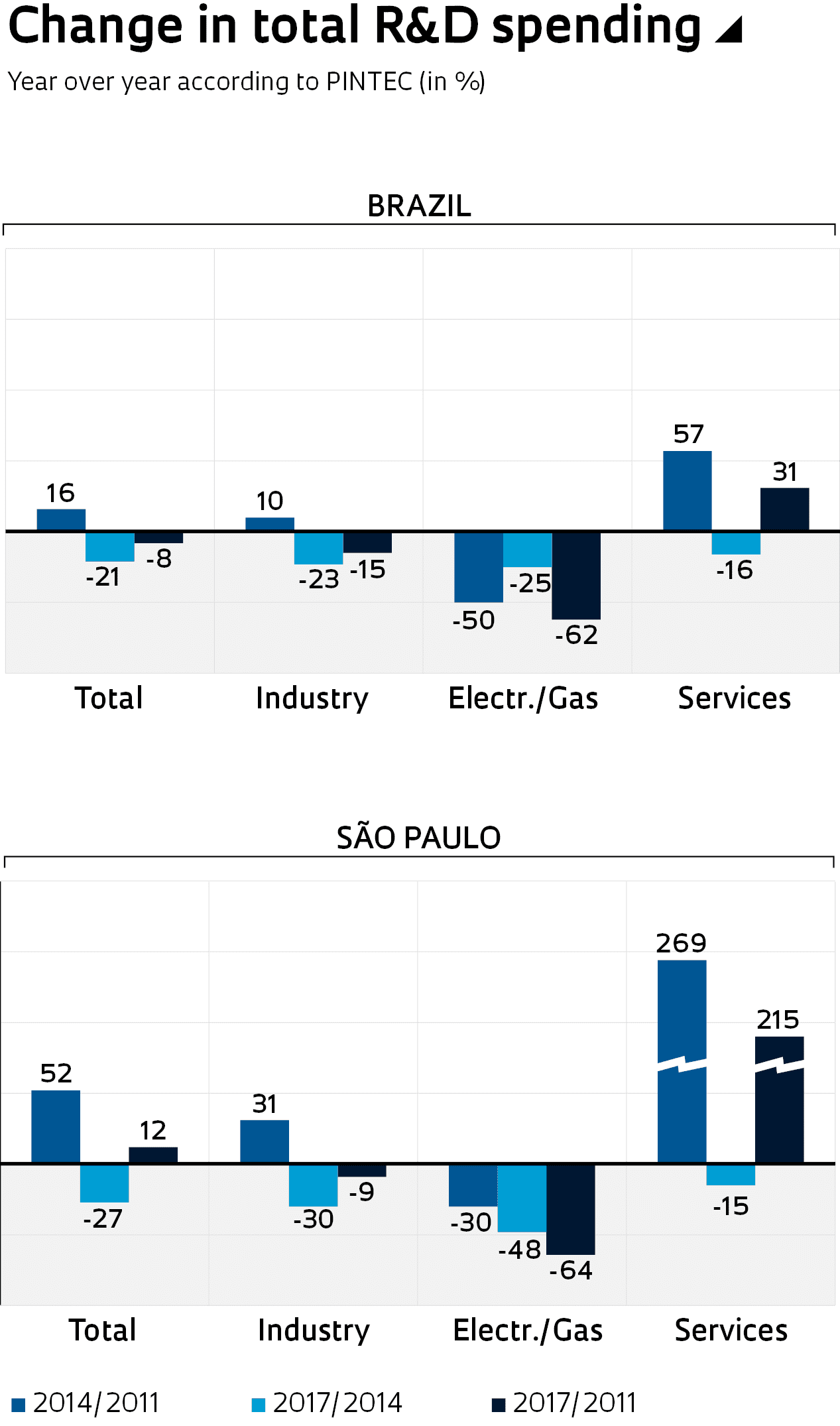- According to data from the latest innovation survey (PINTEC/IBGE, 2017), spending on research and development (R&D)1 by businesses fell nationwide and in São Paulo compared to 2014, both in real terms and as a percentage of GDP.
- In 2017, Brazilian companies spent R$32.6 billion on R&D, or 0.5% of national GDP. The same figures were R$41.2 billion2 and 0.58% in 2014
- For companies based in São Paulo, the total was R$14.6 billion, equivalent to 0.69% of state GDP, in 2017. In 2014, R$19.9 billion2 was spent in the state—0.87% of its GDP.
- The service sector grew between 2011 and 2017, both in Brazil (31%) and São Paulo (215%). In the latter, the sector increased its share of business R&D spending from 11% to 31% in the same period.


NOTES (1) R&D includes any activities directly related to technological innovation of products and processes. Internal R&D covers any activities performed by the company. External R&D covers those contracted out to another organization. The values published by PINTEC are a proxy for business R&D spending, as they do not include all existing companies or all economic sectors (2) Values in reais, including GDP, were corrected by the IPCA (Broad Consumer Price Index) to 2017 values (3) Extractive and processing industries (4) Technology, telecommunications, architecture, and engineering, data processing, networks, and other selected services
SOURCES IBGE Technological Innovation Survey, IBGE National Accounts System (GDP Brazil), IBGE IPCA and Fundação Seade (São Paulo GDP and particular extracts from PINTEC 2011/2014 for São Paulo). Prepared by the São Paulo/DC ST&I Indicators Team and the FAPESP DCTA Department of Studies and Indicators. Methodology: spending data for extractive/processing in São Paulo and Brazil and for sectors in Brazil taken directly from PINTEC. Data on the service sector in São Paulo in 2011 and 2014 was taken from PINTEC in particular extracts for Fundação Seade. Data for the electricity and gas sectors in 2011, 2014, and 2017 and for the service sector in 2017 are projected based on São Paulo’s share of spending by extractive and processing companies
Republish
